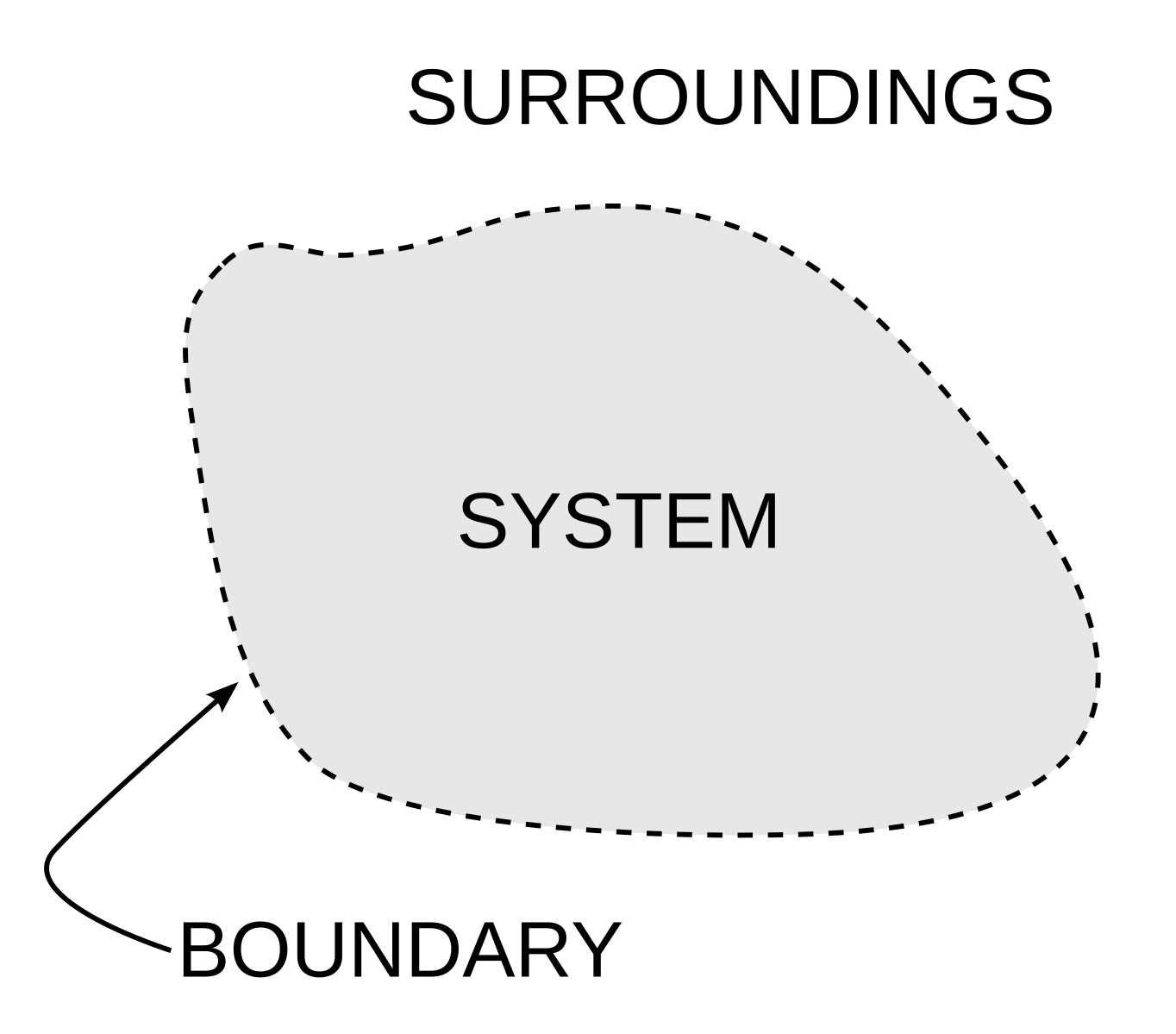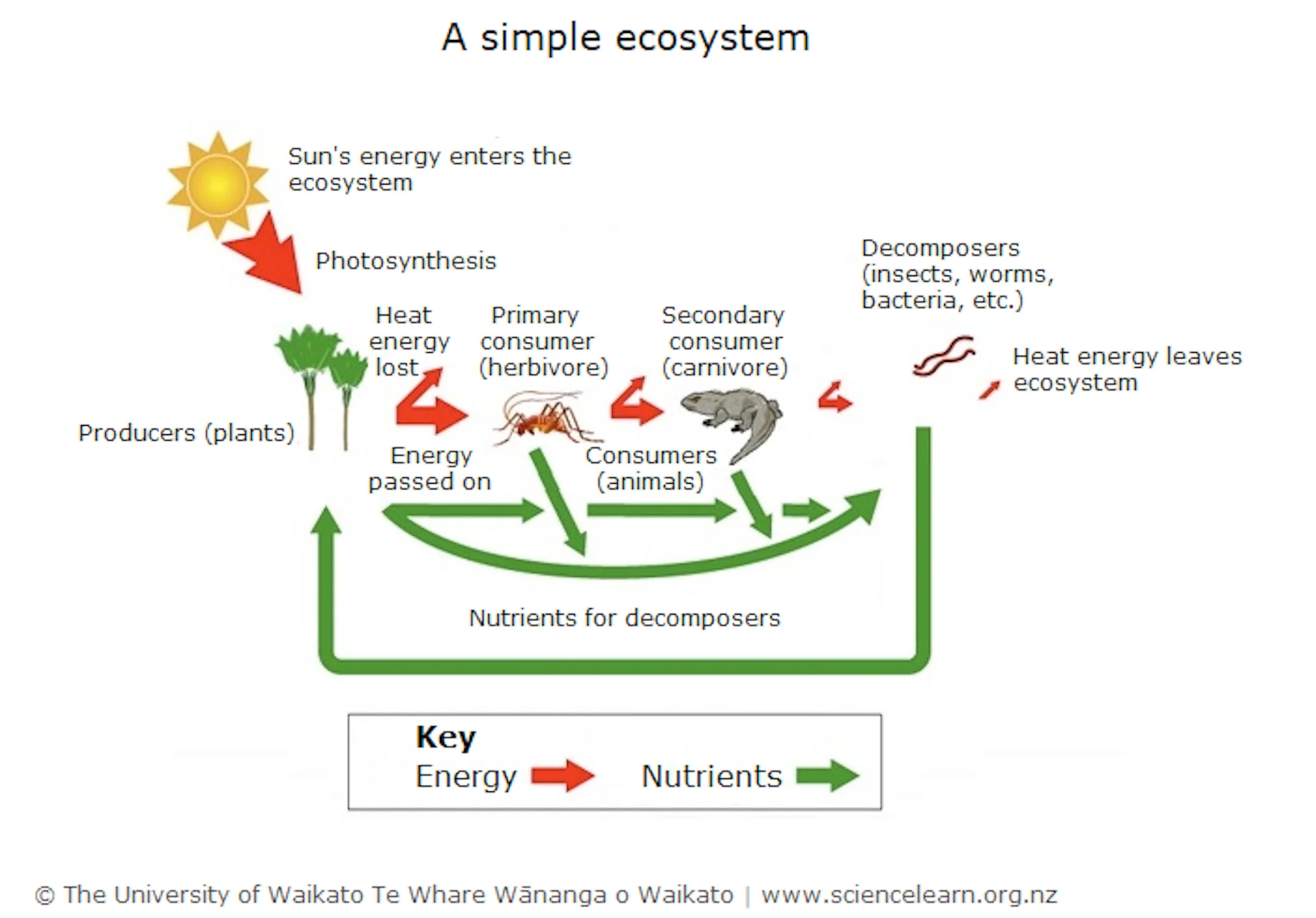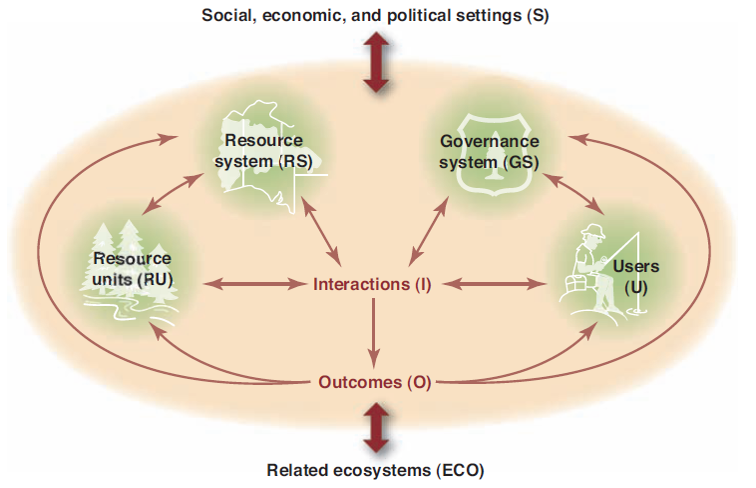IB Syllabus focus:
‘Systems are interacting components forming a functional whole. A systems approach holistically visualizes interactions in ecological or societal contexts.’
Understanding systems and holistic approaches is central to Environmental Systems and Societies. These ideas help explain how ecological and societal components interact to create functioning, interconnected wholes.
What is a System?
A system is a collection of interacting components that together form a functional whole. Systems can be biological, physical, or social, and they often include both tangible and intangible parts.
System: A set of interacting components that function together as a whole, exchanging matter, energy, or information.
Systems are widely used in environmental science because they simplify complex interactions into more manageable and understandable forms.
Holistic Approaches in Environmental Systems
A holistic approach involves examining entire systems rather than isolating individual parts. It acknowledges that interactions often lead to outcomes not predictable from single components alone.

This schematic shows a system enclosed by a boundary and situated within its environment, highlighting the idea that what is included (and excluded) shapes how a system is analysed. It supports holistic thinking by clarifying context and scope before examining interactions. Source.
Holistic Approach: A method of analysis that considers the whole system and the interactions between its parts rather than focusing solely on individual components.
This approach is especially useful in ecology and social science, where complex interdependencies shape outcomes such as biodiversity, sustainability, or policy effectiveness.
Key Features of Holistic Approaches
Interconnectedness: Recognising that no component exists in isolation.
Emergent properties: Understanding that whole systems may show new behaviours not present in individual components.
Complexity: Accepting that feedback loops, cycles, and interactions can complicate predictions.
Multiple perspectives: Incorporating ecological, social, cultural, and political dimensions together.
Systems in Ecology
Ecological systems include organisms, their habitats, and the processes that link them. For instance, a forest ecosystem functions as a system, with trees, animals, soil, water, and climate interacting.

This diagram depicts a simple ecosystem as a whole system: sunlight enters, producers transform energy, consumers transfer it, and decomposers recycle nutrients back to the environment. It emphasises interactions among components rather than isolated parts, aligning with a holistic view. Source.
Important aspects include:
Energy flows: Movement of energy through trophic levels from producers to consumers.
Nutrient cycling: Recycling of carbon, nitrogen, and other elements.
Feedback mechanisms: Natural controls that regulate population and resource levels.
Ecosystem: A community of organisms interacting with each other and with the physical environment, forming a functional unit.
Ecological systems highlight the importance of holistic analysis because small changes, such as species loss, can trigger widespread effects.
Systems in Societal Contexts
Societal systems operate similarly to ecological ones but focus on human organisation, values, and interactions. Examples include:
Political systems that regulate environmental policies.
Economic systems that drive production and resource use.
Cultural systems influencing behaviours such as consumption or conservation.
In these systems, norms, laws, and shared values shape responses to environmental challenges.

This Social-Ecological Systems framework illustrates how ecological components, user groups, and governance interact to produce outcomes within wider social, economic, and political settings. It exemplifies a holistic approach by mapping multiple, connected subsystems rather than treating parts in isolation. Source.
Systems Thinking and Interactions
Systems thinking is a framework for understanding the interactions within and between systems. It highlights:
Inputs: Resources, energy, or information entering the system.
Outputs: Products, waste, or changes resulting from the system.
Feedback loops: Mechanisms that regulate system behaviour.
Boundaries: The limits of what is included in the system model.
This mindset helps identify unintended consequences and highlights trade-offs in environmental management.
Systems Thinking: An analytical approach that emphasises the interdependence and interactions of parts within a system to understand the functioning of the whole.
Advantages of Systems and Holistic Approaches
Using systems models and holistic thinking provides several benefits in Environmental Systems and Societies:
Simplifies complex problems into diagrams or frameworks.
Identifies feedback processes that may stabilise or destabilise systems.
Supports sustainable solutions by linking environmental, economic, and social aspects.
Enhances ability to predict potential impacts of human actions.
Encourages multidisciplinary collaboration across science, policy, and society.
Limitations of Holistic Approaches
While useful, holistic approaches also face challenges:
Over-simplification: Important details may be ignored when modelling.
Difficult to measure: Interactions can be intangible or resistant to quantification.
Subjectivity: Interpretations of system boundaries and interactions vary between analysts.
Unpredictability: Emergent properties and complex feedbacks may prevent accurate predictions.
These limitations remind students that while systems are powerful tools, they cannot perfectly represent the full complexity of real-world ecological and societal issues.
Applications in Environmental Systems and Societies
Holistic and systems approaches underpin major environmental concepts, such as:
Sustainability analysis: Understanding how economic activity, social needs, and environmental health interact.
Policy development: Considering ecological, social, and economic trade-offs in decision-making.
Resource management: Balancing extraction, conservation, and community needs.
Climate modelling: Integrating physical, chemical, and biological processes into predictive frameworks.
These applications show how the systems perspective supports integrated and forward-thinking responses to environmental challenges.
FAQ
A reductionist approach studies parts of a system in isolation, breaking them down into smaller components. While this can provide detail, it often overlooks interactions.
A holistic approach, by contrast, considers the system as a whole, highlighting links between components and emergent properties. This is particularly valuable in environmental studies, where interdependence defines outcomes.
System boundaries determine what is included and excluded in the analysis. They define the limits of the study, whether an ecosystem, community, or nation.
Choosing boundaries too narrowly may ignore key influences, while overly broad boundaries can make systems unmanageable. Effective boundary-setting balances clarity with inclusiveness.
Feedback loops show how systems regulate themselves. They connect inputs and outputs to maintain or shift stability.
Negative feedback stabilises systems by reducing change.
Positive feedback amplifies change, sometimes leading to tipping points.
By including feedbacks, holistic approaches capture dynamic behaviour rather than static descriptions.
Yes, societal systems include human decisions shaped by values, laws, and economics. These decisions function as inputs that influence outcomes such as resource use or conservation.
In holistic analysis, human choices are not external influences but active components that interact with ecological and social processes.
Sustainability requires balancing ecological, social, and economic factors. Systems thinking highlights how these areas are interconnected, preventing single-issue solutions that cause new problems elsewhere.
It enables policymakers to anticipate trade-offs, identify leverage points for change, and promote strategies that consider long-term interactions across multiple domains.
Practice Questions
Question 1 (2 marks)
Define the term system in the context of Environmental Systems and Societies.
Mark Scheme:
1 mark for identifying that a system is a set of interacting components.
1 mark for stating that these components together form a functional whole (e.g., exchanging matter, energy, or information).
Question 2 (5 marks)
Explain how a holistic approach helps in understanding environmental issues. Use examples from ecological or societal contexts to support your answer.
Mark Scheme:
1 mark for defining or describing a holistic approach (focuses on the whole system and interactions, not just isolated parts).
1 mark for recognising the importance of interconnectedness or emergent properties.
1 mark for describing ecological application (e.g., ecosystem interactions such as nutrient cycling or feedbacks).
1 mark for describing societal application (e.g., linking political, economic, and cultural systems in policy-making).
1 mark for explanation of how this approach supports better understanding, prediction, or management of environmental challenges.

